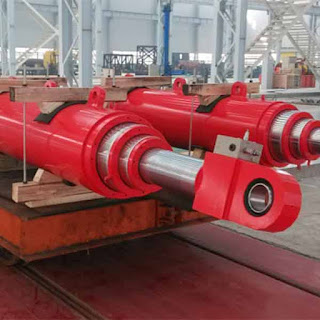Telescopic Hydraulic Cylinder Application And Pressures
A telescopic hydraulic cylinder can be used in several types of applications that require a linear force to be applied over a long distance. While a rod cylinder could potentially perform the job it may be too long when fully collapsed, where as a telescopic cylinder will typically be significantly shorter when in the same position. The collapsed package size plus long stroke capability of a telescopic cylinder is one of the advantages the design offers over a rod cylinder. Rod cylinders will apply the same force throughout their stroke, assuming that system pressure remains constant. While it is possible to design a telescopic cylinder that applies a constant force, the cost is significantly increased. Generally a telescopic cylinder will be used in applications where a constant force is not required. Both single acting and double acting telescopic cylinders are used in non-constant force applications. The most common of these in mobile applications are d...

Comments
Post a Comment